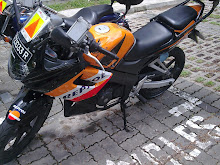Okay, let's get back to the topic, case study. First of all, what is case study? After entering "case study" to Wikipedia search book, here is the definition that I get
A case study is a research strategy, sometimes likened to an experiment, a history, or a simulation, though not linked to any particular type of evidence or method of data collection
Case Analysis
Yup, usually case study is used to depict some condition and we, as the analyst, should solve the problem inside the case study. And usually this activity is called case analysis. There are 3 basic parts in composing case analysis :
- Identification, this part means provide a sharply focused diagnosis of strategic issues and key problems and that you demonstrate a good grasp of the company's present situation.
- Analysis and evaluation. This is usually the hardest part of the report. Analysis is hard work! Check out the firm's financial ratios, its profit margins and rates of return, and its capital structure, and decide how strong the firm is financially. Look at marketing, production, managerial competence, and other factors underlying the organization's strategic successes and failures. Decide whether the firm has valuable resource strengths and competencies and, if so, whether it is capitalizing on them
- Recommendation. The final section of the written case analysis should consist of a set of definite recommendations and a plan of action. Your set of recommendations should address all of the problems/issues you identified and analyzed. If the recommendations come as a surprise or do not follow logically from the analysis, the effect is to weaken greatly your suggestions of what to do. Obviously, your recommendations for actions should offer a reasonable prospect of success. State how your recommendations will solve the problems you identified. Be sure the company is financially able to carry out what you recommend; also check to see if your recommendations are workable in terms of acceptance by the persons involved, the organization's competence to implement them, and prevailing market and environmental constraints.
Different Approaches in Case Analysis
Let's look at what are different approaches to construct a case analysis. Here they are
- Value chain or process flow analysis
- Value system analysis
- Competitive analysis
- Market analysis
- Policy analysis
- Financial analysis
- Organizational analysis
The value chain categorizes the generic value-adding activities of an organization. The "primary activities" include: inbound logistics, operations (production), outbound logistics, marketing and sales, and services (maintenance). The "support activities" include: administrative infrastructure management, human resource management, R&D, and procurement. The costs and value drivers are identified for each value activity. The value chain framework quickly made its way to the forefront of management thought as a powerful analysis tool for strategic planning. Its ultimate goal is to maximize value creation while minimizing costs. Here is an example of wireless value chain
 Competitive analysis allows you to identify your competitors and evaluate their respective strengths and weaknesses. By knowing the actions of your competitors, you will have a better understanding of what products or services you should offer, how you can market them effectively, and how you can position your business. There are 4 basic steps to conduct competitive analysis
Competitive analysis allows you to identify your competitors and evaluate their respective strengths and weaknesses. By knowing the actions of your competitors, you will have a better understanding of what products or services you should offer, how you can market them effectively, and how you can position your business. There are 4 basic steps to conduct competitive analysis- Identify your competition
- Analyze strength and weakness
- Look at opportunities and threats
- Determine your position
Other than that, I was very happy at that time because there is no assignment for this week ^^v.. laaa laaa laaa... :D.. however don't forget to upload the edited version of the elevator pitch. I can't wait to present our edited elevator pitch. Ciaooo!!!








